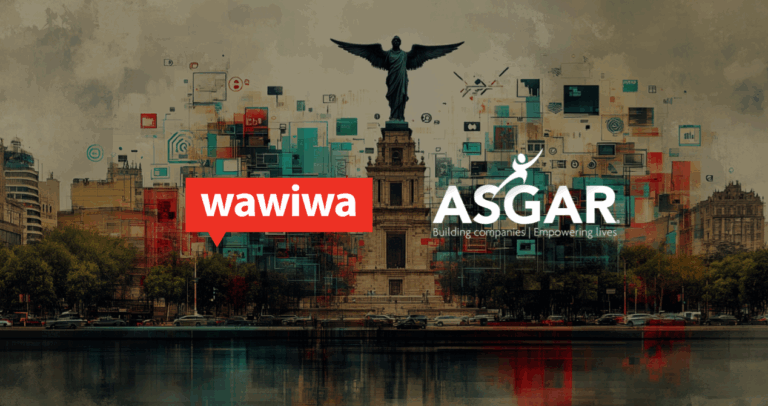McKinsey’s State of AI in 2025 report reveals a world where companies are experimenting like never before, dabbling with AI agents and reporting sparks of innovation… yet very few have crossed the line into real, scalable transformation. The gap between “using AI” and “benefiting from AI” is wider than most leaders admit.
This blog discusses what’s actually happening behind the hype: who is getting value from AI, how agentic systems are reshaping workflows, why high performers are pulling ahead, and where organizations are struggling. We also explore why AI impact ultimately comes from people – those trained to use AI tools effectively – and what organizations must do to build AI-proof teams that adapt, innovate, and secure a sustained competitive edge in the job market.
AI Use is Broad, but Scale is Rare
The headline numbers sound impressive: 88% of organizations say they’re using AI in at least one business function, up from 78% the previous year. But McKinsey’s data reveals a different reality beneath the surface – AI is present, but not integrated. Nearly two-thirds of companies are still stuck in experimentation or pilot phases, and only about one-third report any level of true scaling across the enterprise. The majority treat AI as an add-on to existing processes rather than a redesign of how work gets done.
Larger companies, both by revenue and employee count, are more likely to reach scaling. Nearly 50% of companies generating more than $5B in revenue are scaling AI, compared to just 29% of those below $100M. Access to capital, talent, and institutional readiness all shape how fast these organizations can move beyond pilots. Smaller firms may be agile, but they often lack the infrastructure to operationalize AI across functions.
This gap creates an illusion of progress. Leaders proudly report “AI adoption,” yet what exists internally is often just experimentation. That is why the majority of organizations see modest, isolated benefits rather than enterprise transformation.
Agentic AI: Powerful Potential, Early Signs of Real Change
Where things get interesting is in the shift from tools that answer to systems that act. Agentic AI – models capable of planning, executing, and iterating across multi-step workflows – is reshaping early movers. McKinsey reports that 62% of organizations are already experimenting with AI agents, and 23% are scaling them in at least one function. These are live deployments handling tasks that would otherwise require human intervention.
But just like general AI adoption, scale remains limited. No single business function shows more than 10% of respondents scaling agents at full capacity. This reveals an important psychological barrier: leaders are comfortable letting AI inform decisions, but hesitant to let AI make them or execute them.
Technology, media, telecommunications, and healthcare report the highest levels of agent use. These sectors are digitized, data-rich, and accustomed to automation. They move faster because they have systems designed for iteration. But even within them, agentic AI is primarily deployed in one or two pockets – not across the organizational bloodstream. The technology is ready but the organizations are not.
AI is Driving Innovation – Not Yet Enterprise-Level Profit
McKinsey’s survey exposes a striking imbalance: AI clearly delivers value at the use-case level, but very rarely at the enterprise level. Only 39% of respondents report any earnings before interest and taxes (EBIT) impact attributable to AI, and most say it accounts for less than 5% of their total EBIT. That means companies are seeing efficiency gains here and there – faster code, better targeting, reduced manual work – but these wins don’t yet compound into business transformation. In other words, AI is still mostly a tactical tool, not a strategic growth engine.
Yet the qualitative benefits tell a different story. 64% of respondents say AI is enabling innovation, and almost half report improvements in customer satisfaction and competitive differentiation. These are indicators of long-term capability building. When AI surfaces insights faster, personalizes experiences, or accelerates product iterations, it changes what organizations can do. But innovation is slow to show up in financials. The lag between experimentation and sustained impact is where most companies get discouraged and retreat to smaller ambitions.
The few organizations capturing real economic benefit aren’t chasing efficiency alone. McKinsey highlights a pattern: high performers set multiple objectives – growth, innovation, and cost optimization. They redesign workflows, remove manual friction, and embed AI into how decisions are made, not just how tasks are automated. That alignment is why these companies scale quicker, invest more, and eventually convert innovation into revenue and profit.
Wawiwa’s Take: AI Impact Comes from People, Not just Tools
If one theme stands out in McKinsey’s report, it’s this: tools don’t transform organizations – people do. At Wawiwa, we see that every day. AI becomes useful only when management, learners, and teams know how to use it, why to use it, and where it drives value. That is why we integrate AI not as a standalone module or a last-minute add-on, but as a core layer of every program we deliver. Our learners practice using AI as they would in their desired job: building, researching, coding, designing, and solving problems using AI tools that reflect the real world.
AI is everywhere at Wawiwa. We incorporate AI into all our training offerings, teaching methods, and internal processes – to keep up with industry trends and meet the ever-changing demands of our partners and students around the world. Students don’t “study AI” as a theory; they use it from day one. This is how they develop the technical competencies, adaptability, and confidence that employers expect.
We offer reskilling programs for tech jobs in high demand, such as AI Full-Stack Developer and AI Data Analyst. We also provide AI upskilling courses for teams and organizations so their employees learn how to work alongside AI. These courses are practical, grounded in real business use cases, and tailored to roles: marketers, product managers, software developers, and more. When people understand how to leverage AI effectively, the technology becomes a driver of productivity, innovation, and competitive advantage.



